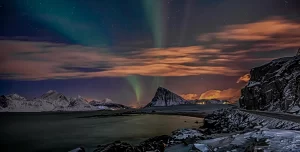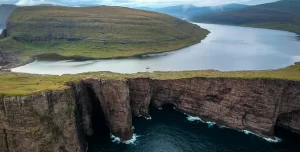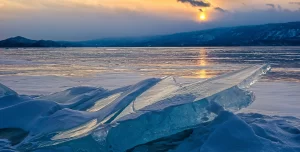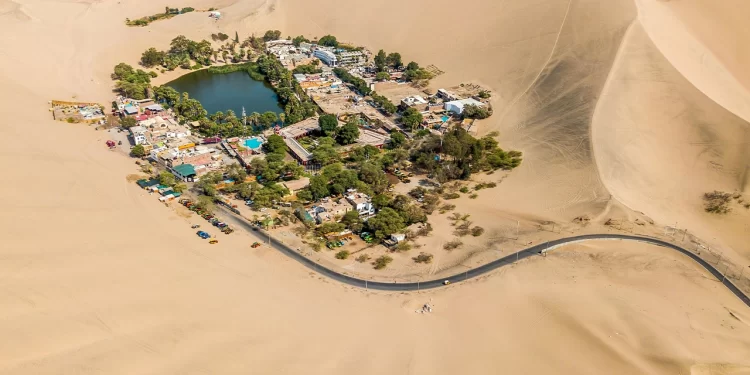Ready to explore some of the most stunning and lesser-known destinations of the world? From the Arctic allure of Svalbard to the ancient charm of Plovdiv, these seven hidden gems offer unparalleled experiences and breathtaking landscapes. Dive into our guide to uncover these extraordinary spots that promise adventure, tranquility, and a touch of the extraordinary.
1. Svalbard, Norway
A Polar Paradise in the Arctic Ocean
Nestled in the Arctic Ocean, Svalbard is an ethereal archipelago where icy landscapes and rare wildlife create a polar wonderland. Visitors to Svalbard are treated to extraordinary experiences, including witnessing the awe-inspiring Northern Lights from late September to early April, and the Midnight Sun from late April to mid-August, where the sun never sets.
Home to majestic polar bears and the crucial Svalbard Global Seed Vault, this remote destination offers an unmatched Arctic adventure.

Why It’s Special
Svalbard is a haven for a variety of wildlife, with the iconic polar bear as a notable resident. Visitors have the opportunity to witness stunning glaciers and icebergs, as well as to tour the renowned Svalbard Global Seed Vault. One of the most breathtaking experiences in Svalbard is witnessing the Northern Lights, a natural spectacle that paints the polar skies in brilliant hues of green and purple.
Also Read: These Landmarks Are A Must-See On Any Travel Bucket List
Best Time to Visit
March to September for the Midnight Sun, and November to February for the Northern Lights.
Getting There
Fly into Svalbard Airport, Longyear from Oslo or Tromsø.
 2. Faroe Islands, Denmark
2. Faroe Islands, Denmark
The Rugged North Atlantic Marvel
A collection of 18 volcanic islands, the Faroe Islands are a hidden gem in the North Atlantic. With dramatic cliffs, serene villages, and thriving birdlife, this destination appeals to nature enthusiasts seeking the unspoiled charm of the outdoors.
Why It’s Special
The Faroe Islands are a paradise for hikers and birdwatchers. The iconic Múlafossur Waterfall and the optical illusion of Sørvágsvatn Lake are must-see sights.
Best Time to Visit
May to August, when the weather is mild and the days are long.
Getting There
Fly into Vágar Airport from Copenhagen, Edinburgh, or Reykjavik.
 3. Socotra, Yemen
3. Socotra, Yemen
The Alien Garden of the Earth
Often referred to as the “Galápagos of the Indian Ocean,” Socotra stands out for its otherworldly flora and fauna. Its unique biodiversity, including the famous Dragon’s Blood Tree, makes it one of the most unusual places on Earth.
Why It’s Special
The unique biodiversity of Socotra and alien landscapes offer an unparalleled travel experience, with flora and fauna found nowhere else on Earth.
Best Time to Visit
October to April, avoiding the monsoon season.
Getting There
Flights to Socotra are limited, with connections typically through mainland Yemen.

4. Valle de Cocora, Colombia:
The Land of Sky-High Palms
Located in Colombia’s coffee region, Valle de Cocora is home to the world’s tallest wax palms, towering up to 60 meters high. The lush valley, part of the Los Nevados National Park, is a haven for hikers and nature enthusiasts.
Why It’s Special
The surreal landscape of wax palms amidst the cloud forest creates an unforgettable experience. The area also offers opportunities to explore the rich coffee culture of Colombia.
Also Read: Must-See Active Volcanoes You Can Actually Visit
Best Time to Visit
December to March and June to August, during the dry season.
Getting There
Fly into El Edén International Airport in Armenia, then drive to Salento, the gateway to Valle de Cocora.
 5. Huacachina, Peru
5. Huacachina, Peru
The Oasis of Adventure
Hidden in the Peruvian desert, Huacachina is a small village built around a natural lagoon, surrounded by towering sand dunes. Known as the “Oasis of America,” it’s a hotspot for sandboarding and dune buggy rides.
Also Read: These 10 Countries Boast The Most UNESCO World Heritage Sites
Why It’s Special
Huacachina offers a mix of adventure and relaxation. After a day of adrenaline-fueled activities, you can unwind by the tranquil lagoon, which locals believe has healing properties.
Best Time to Visit
April to October, when the weather is cooler and drier.
Getting There
Fly into Lima and take a 4-5 hour drive to Huacachina.
 6. Plovdiv, Bulgaria
6. Plovdiv, Bulgaria
A Blend of History and Modernity
Plovdiv, one of Europe’s oldest cities, seamlessly blends ancient history with modern culture. Its Roman Theatre, vibrant Kapana District, and charming Old Town make it a must-visit for history buffs and culture enthusiasts.
Why It’s Special
Plovdiv’s rich history, from Thracian settlements to Roman ruins, offers a fascinating journey through time. The city’s lively arts scene and festivals add to its appeal.
Best Time to Visit
May to September, when the weather is warm and outdoor events are plentiful.
Getting There
Fly into Plovdiv Airport or Sofia Airport, then take a train or bus to Plovdiv.

7. Lake Baikal, Russia
The World’s Deepest Lake
Lake Baikal in Siberia is the world’s deepest and oldest freshwater lake, holding 20% of the world’s unfrozen fresh water. Known as the “Pearl of Siberia,” it offers crystal-clear waters, dramatic ice formations in winter, and diverse wildlife.
Also Read: Top Sustainable Tourism Destinations Around The World
Why It’s Special
Lake Baikal’s unique ecosystem includes species found nowhere else on Earth. The winter ice, with its striking turquoise color and intricate patterns, is a sight to behold.
Best Time to Visit
February to March for the frozen lake experience, and June to September for hiking and boating.
Getting There
Fly into Irkutsk or Ulan-Ude, then take a bus or train to the lake.

Founded in 2016, The Traveller Trails is a print and digital magazine and a trusted source for current news, trends, analysis, opinions, interesting blogs, videos and exclusive interviews from every corner of the world.












